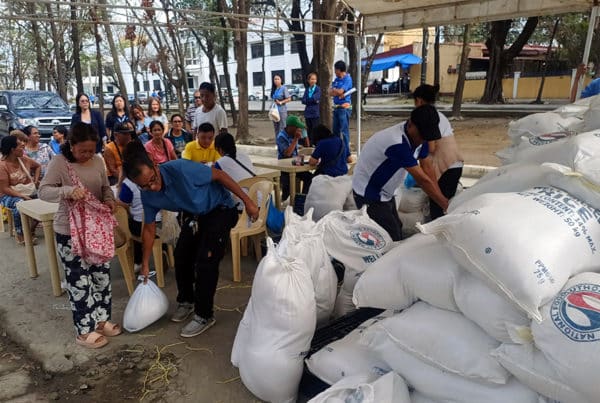Shrimps named after GMA and JdV
President Gloria Macapagal-Arroyo and former House Speaker Jose de Venecia Jr. are now immortalized in shrimp.
The Bureau of Fisheries and Aquatic Resources (BFAR) in Dagupan is now developing Hipon ni Gloria of the ulang variety and a hipon ni JDV of the Penaeus vannamei kind.
Dr. Westly Rosario, BFAR center chief here and excecutive director of the National Fisheries Research Development Institute (NFRDI), is leading fishery experts and shrimp farmers in a five to ten-year program aimed at expanding the production of the two varieties.
Teofilo Rivera Jr, president of Samahan at Ugnayan sa Alagang Hipon, a natiowide association of vannamei farmers, said they believe that Penaeus vannamei, or the Hipon ni JDV, will be the third most important and profitable species in the country after bangus and tilapia.
The naming of Hipon ni JDV is in recognition of the congressman’s contributions in fishery research and industry development.
JDV initiated the importation of Penaeus vannamei into the country and has contributed more than P100 milllion from his congressional funds to the aquaculture industry.
Hipon ni Gloria, on the other hand, an endemic variety in the Philippines, was personally launched by the President here in 2005.
A gene bank for ulang has since been established at the NFRDI.
P. vannamei averages P270 per kilogram at the Malabon market Manila and the price usually increases to as much as P350 during the Christmas season and Chinese New Year.
Ulang, which though endemic is scarcer in the markets, ranges from P240 to P300 per kilogram.
Fishery experts of BFAR and the Southeast Asian Fisheries Center are pooling their resources together in the survey/inventory of ulang species gathered in the Philippines using molecular identification. They are also working with scientists from Indonesia and Thailand to resurrect the shrimp industry in the region by focusing on ulang.
“Unfortunately bihira nating makita yong ulang in the market. Ang problema ho is siguro dissemination of technology,” Rosario said.
The Philippines, according to Rosario, is currently importing about 400 metric tons of P. vannamei monthly to meet the demand of the local restaurant industry.
NEW LAB
Meanwhile, the NFRDI Aquatic Animal Health Laboratory (Aquahealth Lab), established to support the growing of P. vannamei in the country, was inaugurated last week.
The laboratory, which cost about P4 million, will cater to the demand on health management and disease diagnostic services for P. vannamei and p. monodn hatcheries and grow-out farms.
In the early 70s, De Venecia was the first in Pangasinan set up a black tiger prawns farm, and its success spawned an industry. However, a shrimp disease caused the industry’s downfall.
This is one of the reasons for De Venecia’s strong support on alternatives for a continued and sustainable shrimp industry.
Rosario said there are now nine white shrimps hatchery in the Philippines and it is expected to become a major industry in the country.
But while the P. vannamei has more potential in terms of profitability, Rosario said ulang actually tastes better as it is not processed.
“Maybe we have to improve its (ulang) breeder,” Rivera added. #







